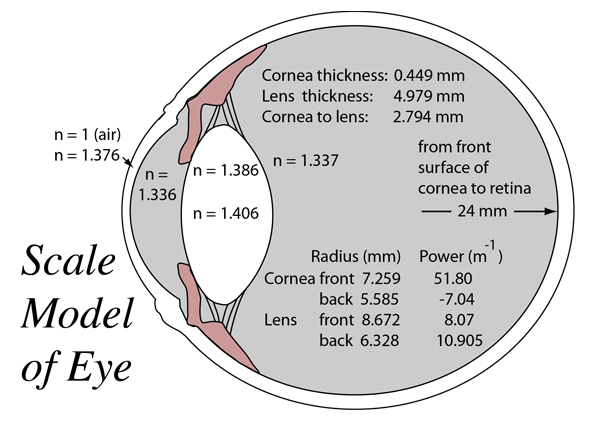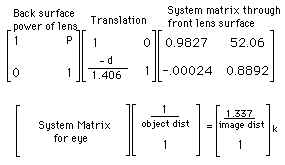Design of Scale-Model Eye

The scale model eye was developed by scaling an actual cross-sectional picture of an eye from Light & Vision by Mueller & Rudolph. Then a total distance of 2.4 cm from cornea to retina was adopted from Hecht, along with his values for the indices of refraction for all components. The actual measurements for radii of curvature and separation were scaled using a solver program (TK!Solver) until a parallel incoming ray fell on the retina. It is not known whether the eye shown by Mueller&Rudolph is typical.
Vision concepts
Image formation concepts
References
Mueller & Rudolph
Hecht, 2nd Ed.
| HyperPhysics***** Light and Vision | R Nave |

